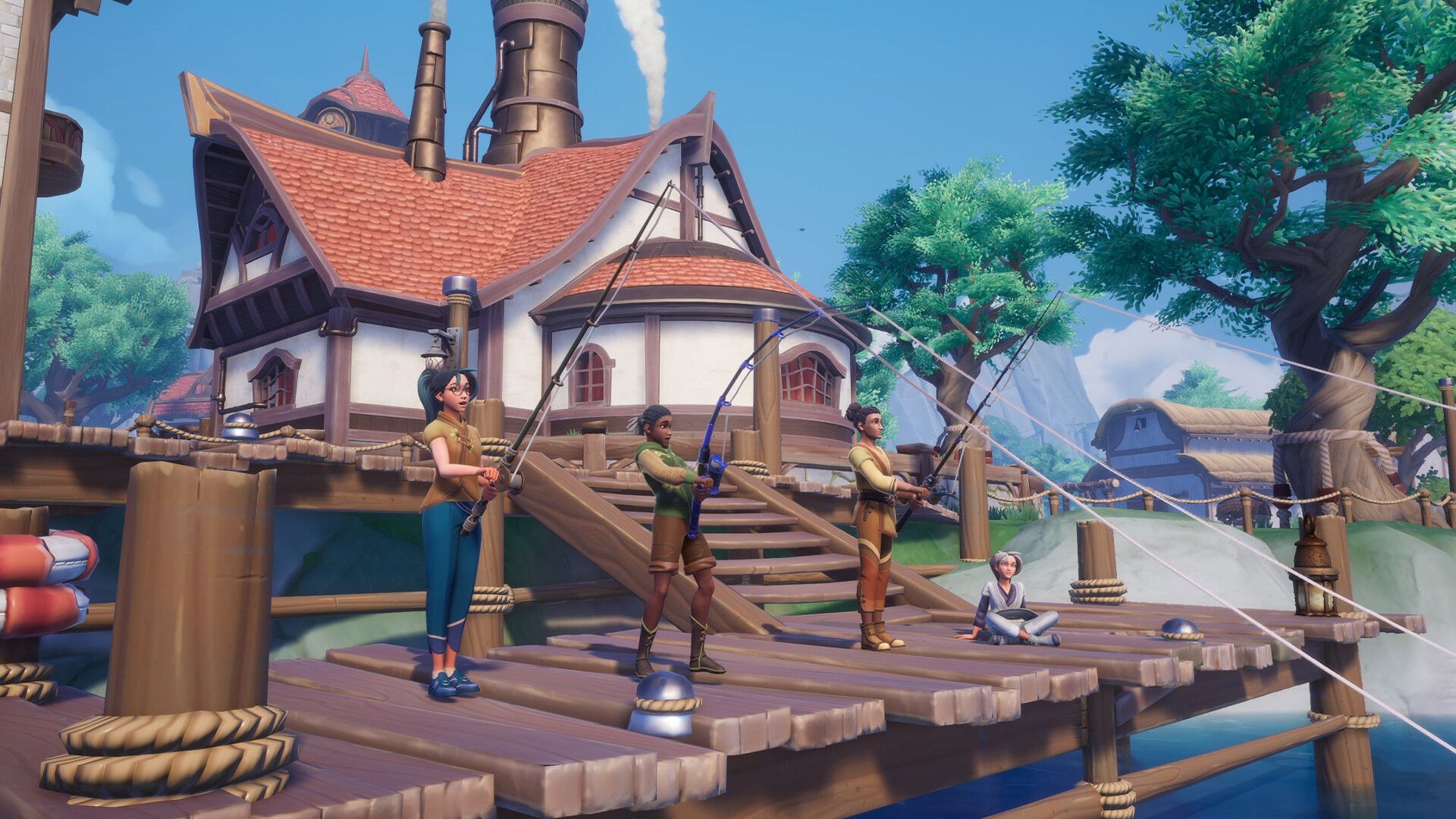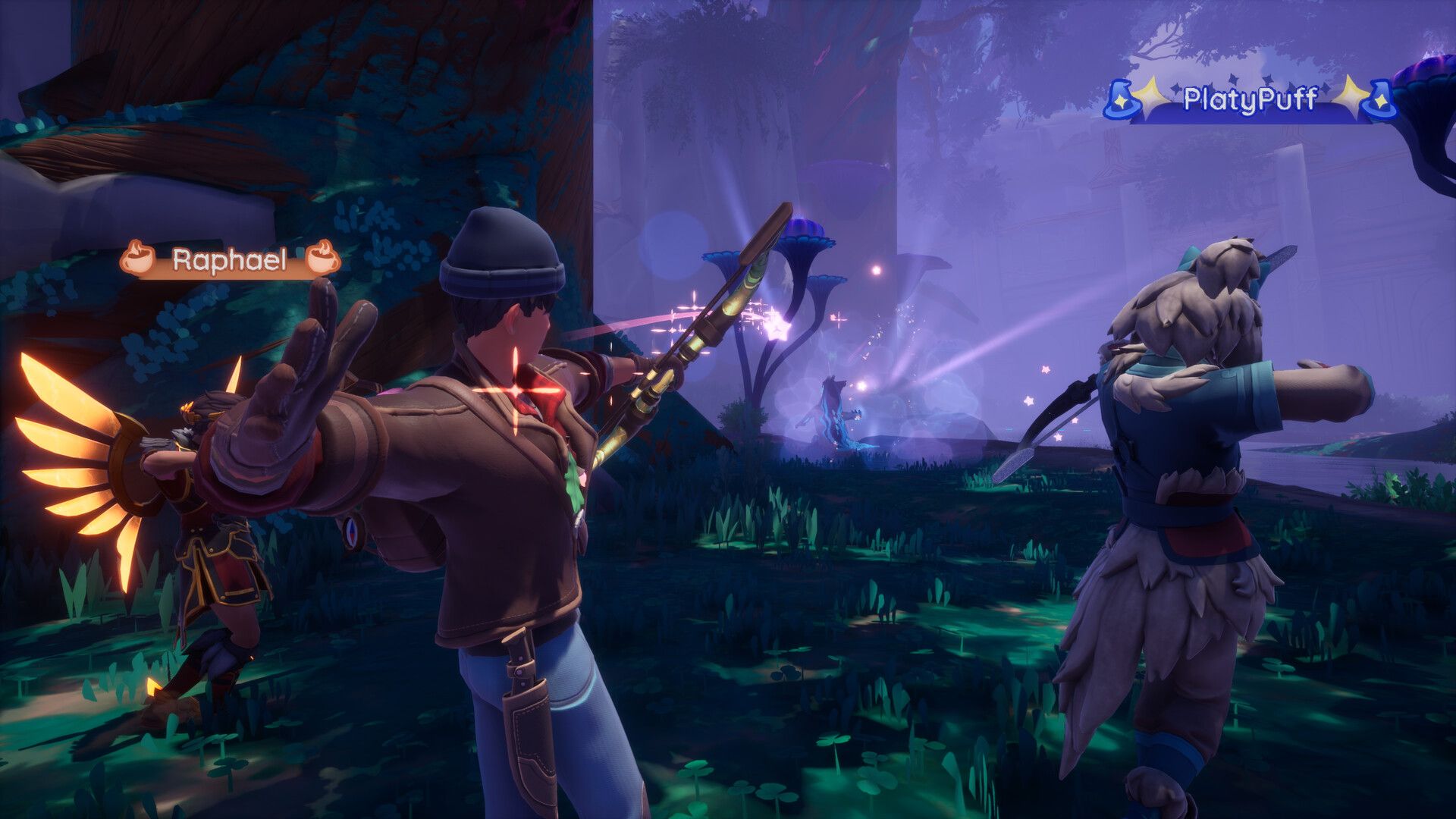Palia: Elderwood Review – A Land of Enchantment
There has been no shortage of life sims coming out these days. Sparked by the popularity of ConcernedApe’s Stardew Valley and Nintendo’s Animal Crossing: New Horizons, plenty of other studios have been trying to put their own spin on the genre, offering up cozy experiences combined with different unique mechanics. Singularity 6’s Palia brought its own spin on the genre by turning it into a pseudo-MMORPG, where the world you inhabit is shared with other players, and more recently, the game brought in a host of new content in the form of its Elderwood expansion.
Palia introduces its players into its strange and magical world with just enough motivation and the barest hint of a plot thread to get things going; you take on the role of a new human that has suddenly emerged thousands of years after humanity as a whole went extinct. While there are plenty of more questions about this, the answers can wait, however. What’s more important in the short term is for you to get yourself situated in this strange new world with a home, ways to make equipment, money, and most importantly, forge relationships.
The main story, while initially acting as a tutorial to help you get your home up and running with crafting benches, a place to cook, and a patch of dirt where you can start growing your own vegetables, eventually becomes about something grander. Large parts of the story in Palia revolve around you exploring ancient ruins and solving incredibly basic puzzles. The time between dungeon crawls is filled with some fetch quests that do little more than add what often feels like unnecessary padding to a game that is already long and grindy.
[embedded content]
“Right from the beginning, you’re basically free to ignore the homesteading aspects of the game and set out and explore on your own.”
It is worth noting that while there is a story that you can follow, it’s fairly long, grindy, and quite dull. Despite the extinction of humanity being an interesting premise to kick things off, the main focus of Palia has always very obviously been its life sim aspects. The game doesn’t really care all that much about you discovering lost history. Rather, it’s much more important that you partake in the other parts of the game where you’re building and decorating your home, gathering resources, becoming friends with the local villagers, and along the way maybe make some money so you can buy more stuff.
The world of Palia is split up into three distinct major zones – Kilima Valley, Bahari Bay, and its most recent addition, Elderwood. Right from the beginning, you’re basically free to ignore the homesteading aspects of the game and set out and explore on your own. However, the game is definitely designed with a progression curve in mind. You’re not going to be able to do much in the way of cutting down trees, mining for minerals or hunting animals and their pelts in Bahari Bay until you get your first gear upgrades, for instance.
The progression system in Palia might be simple, but they definitely aren’t lacking in depth. Your main abilities are divided into several distinct categories, and the more you partake in activities related to those categories, the more you level them up. Cut down enough trees and you’ll level up your foraging skill, for instance. Similarly, plant, care for and harvest enough crops to level up gardening, or catch some fish and hunt some game to get better at fishing and hunting respectively. These skills, in turn, can feed into others; ingredients you get from gardening, foraging, mining and hunting can be used to cook food, which has its own skill to level up.
Once you level up a skill, you get to buy new crafting recipes that help you go even further down that path. Getting mining to level 3, for example, lets you upgrade your mining pick, which in turn lets you mine for bigger, harder, and more valuable minerals that can then be used to craft other things. Generally speaking, Palia encourages spreading your skills out, engaging in just about every system in the game. Ultimately, the main use for all of these skills is to allow you to make furniture that can then be used to decorate your house.
Interior (and exterior) decorating is quite clearly the core focus of the entire game. Not only are there plenty of tools available to let you build the house of your dreams, there are also ways to showcase your home to other players, either by inviting over friends to show them around, or by making your house publicly available, letting just about anyone come over and see how you’ve done.
When it comes to combat, there just isn’t any of it in Palia. The closest you get is how the hunting mechanic works; you simply use your bow to aim and shoot down critters you might see running around the world. Hit them enough times and they vanish into a puff of smoke, leaving behind pelts, meat, and maybe some rare items you can then sell for money. The creatures you can hunt don’t really fight back, and in fact, there is simply no concept of player health in the game; you simply can’t die.

“When it comes to combat, there just isn’t any of it in Palia.”
While, generally speaking, all of this does end up making Palia feel like the video game equivalent of a warm hug and it is worth noting that at times, the game absolutely loves wasting your time. Not only do materials tend to take quite some time to refine – a single copper bar needs around 3 real-world minutes to make, and you often need anywhere between 5 and 15 to start building mid-game things – there’s also quite a bit of running back-and-forth in the game. Since it’s a multiplayer-focused title, you can’t simply build a bed and sleep in it to skip forward through time like other games in the genre allow you to. Rather, you’ll often just be staring at your screen while waiting for a vendor to wake up and get to their store, or while waiting for that last stone brick you need to build out your cooking station.
The latest major content release for Palia, the Elderwood expansion, brings with it a fair bit of additions to the game. Along with the entire new zone, you can also find and befriend a new villager as you explore the mysterious Elderwood. There are also crumbs of a story that you can discover, but this largely plays out through a series of disparate quests that leave you with more questions than answers. There aren’t really any grand revelations about what happened in the Elderwood; rather, you might find a few journal pages that start hinting towards something bigger that never really culminates into a grand finale.
As for expanding on the other aspects of Palia, Elderwood does bring in a bit more to do, thanks to the addition of new animals to hunt, a new type of tree to cut, new fish to catch, and all of this come together in the form of new recipes to craft that range from new Elderwood-themed furniture to new food that can give you more benefits. Generally speaking, the expansion feels like it slots right into a larger game, but the fact that it doesn’t really have much in the way of its own identity.
Sadly, the music in Palia is pretty dull. The score attempts to evoke a sense of wonder with string- and piano-heavy orchestral tracks, but it ends up feeling generic and forgettable. The overall sound design isn’t much better, while there is audio feedback for actions like mining or shooting an animal with an arrow, it doesn’t really add anything meaningful to the gameplay. Ultimately, Palia is the kind of game where the audio fades into the background, and you might find yourself turning the volume down and mildly focusing on other things while playing.

“The latest major content release for Palia, the Elderwood expansion, brings with it a fair bit of additions to the game.”
Being a free-to-play game, Palia does offer up some ways to spend your real-world money. However, nothing in the microtransaction store strictly affects gameplay. Most of the items for sale are different sets of outfits, which might be annoying for players that like to pay attention to fashion in these kinds of games. There are also pets to buy, and skins for all the various tools you use. While I personally don’t find these microtransactions too grating considering the free-to-play nature of the game since there aren’t any “time savers” that might compel you to spend some money to save time. However, since customising your home and character are pretty big parts of Palia, the store’s presence can be a bit of a sticking point for some players.
Palia being a free-to-play game does ultimately give it quite a bit of leeway when it comes to the density of content in its expansions or how much time it likes to waste by just making you wait. As far as the cozy life-sim goes, Palia is definitely quite decent, and its multiplayer elements do make the world feel more alive and lived-in thanks to plenty of players running back and forth while you do your own thing. However, the grind is definitely quite heavy here, and players that are interested in more active, action-packed games won’t really find anything to draw them in here, even with the Elderwood expansion.
This game was reviewed on PC.


Comments are closed.